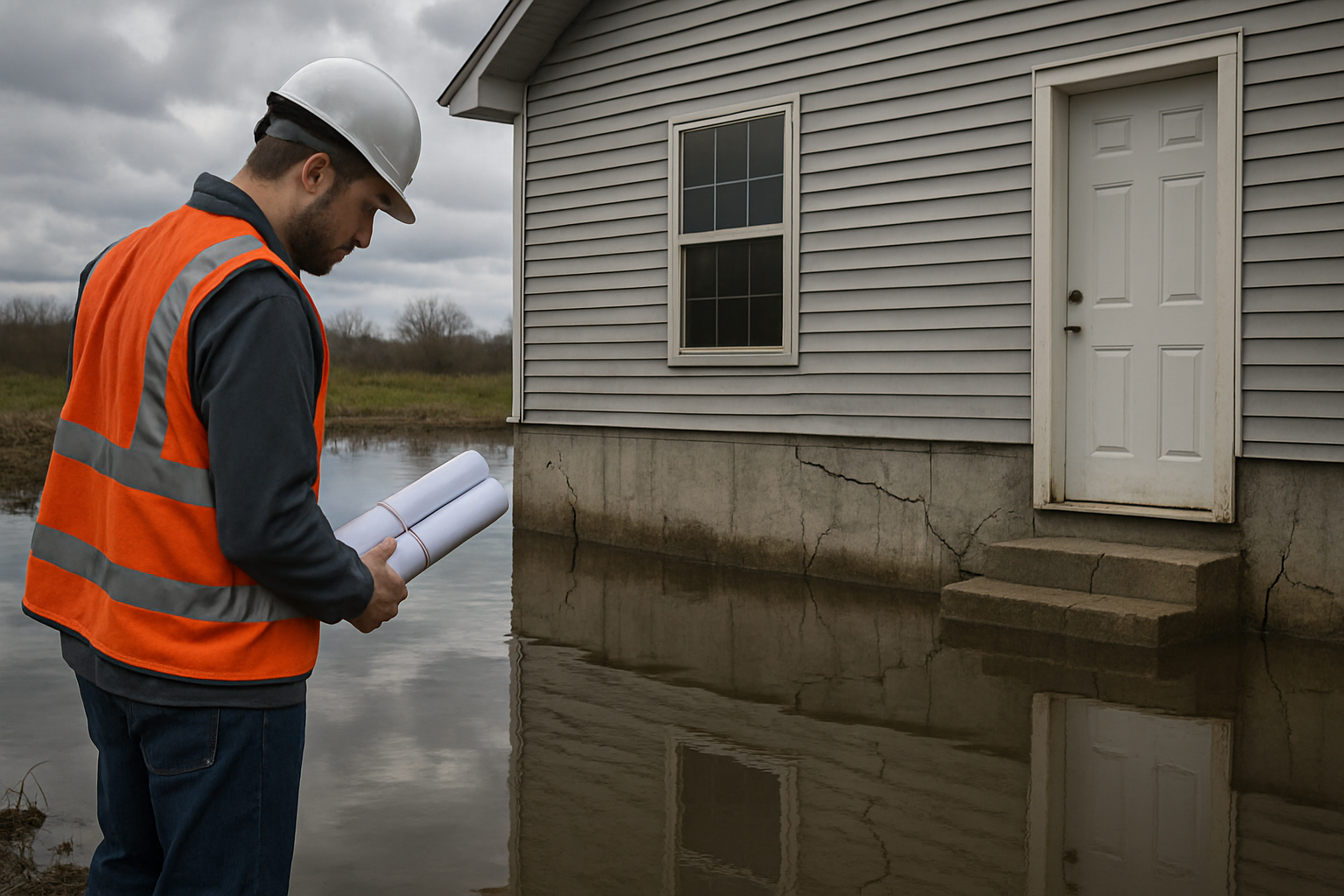What Happens to Your Home’s Foundation After a Flood? Warning Signs Every Homeowner Should Watch

What Happens to Your Home’s Foundation After a Flood? Warning Signs Every Homeowner Should Watch
Meta Title:What Happens to Your Home’s Foundation After a Flood? Warning Signs Every Homeowner Should Watch
Meta Description:Learn how floods impact your home’s foundation and spot early warning signs to prevent costly repairs. Stay protected after water damage.
URL Slug:what-happens-to-your-homes-foundation-after-a-flood-warning-signs
Introduction
Flooding is one of the most destructive events a home can face, and while waterlogged carpets and damaged drywall are obvious concerns, the most serious threat often lies beneath the surface — your foundation. As the structural base of your property, the foundation keeps walls upright, floors level, and your entire home secure. When floodwaters seep into the ground around your property, they can compromise this essential support system in ways that may not be visible right away.
Understanding what happens to your home’s foundation after a flood is the first step to safeguarding your property from long-term damage. From soil erosion to hidden cracks, recognizing early warning signs can help you act before minor issues turn into costly repairs.
TLDR – Quick Guide
- Floodwaters weaken the soil around foundations, increasing the risk of cracks and shifting.
- Hydrostatic pressure can push against basement walls, causing bowing or leaks.
- Uneven settling after a flood often leads to sloping floors and sticking doors.
- Moisture intrusion encourages mold growth and structural decay.
- Immediate inspection after a flood is critical to prevent worsening damage.
How Floods Affect Your Foundation
1. Soil Erosion and Washout
Floodwaters often carry away soil supporting the base of your foundation. This erosion reduces stability, leaving parts of your home unsupported. Over time, these voids can cause uneven settling, cracks, or sagging floors.
2. Hydrostatic Pressure Buildup
When groundwater saturates the soil, it creates hydrostatic pressure that pushes against basement walls and slabs. If drainage systems fail, this pressure can cause bowing walls or even foundation leaks. The longer water sits, the greater the risk of structural compromise.
3. Cracks and Shifting
As water infiltrates and dries unevenly, expansion and contraction stress the foundation. This often results in hairline cracks, which may expand into visible structural fractures. Left untreated, these can threaten the entire stability of your home.
4. Mold, Mildew, and Decay
Moisture trapped in cracks and porous foundation materials fosters mold growth. Beyond health risks, mold can accelerate decay in wooden supports and insulation around your foundation. The hidden spread of mold often signals incomplete drying after a flood.
5. Long-Term Structural Risks
Even if initial damage seems minor, a weakened foundation is more vulnerable to future storms and natural settling. This cumulative effect can reduce property value and increase repair costs significantly. Acting quickly after each flood event is the best way to avoid compounded damage.
Warning Signs Every Homeowner Should Watch
- Cracks in walls, floors, or foundation slabs.
- Doors and windows that suddenly stick or won’t close properly.
- Sloping or uneven floors inside your home.
- Persistent dampness, musty odors, or visible mold near the foundation.
- Gaps between walls and ceilings or walls and floors.
These signs often appear gradually, making it critical for homeowners to remain vigilant after a flood event.
Key Takeaways
- Floodwaters destabilize foundations through soil erosion, hydrostatic pressure, and moisture intrusion.
- Warning signs include cracks, uneven floors, and musty odors.
- Mold growth and long-term structural risks often follow incomplete drying.
- Prompt inspections and repairs are essential for protecting your investment.
- Awareness and early action reduce costly future repairs.
FAQs
- What is the biggest risk to a home’s foundation after a flood?
The greatest risk is structural weakening due to soil erosion and hydrostatic pressure. These forces compromise stability and can cause cracks or shifting. If left unaddressed, they may lead to costly foundation repairs or full reconstruction. - How soon should I have my foundation inspected after a flood?
Inspections should be scheduled immediately once floodwaters recede. Quick evaluations help identify hidden damage before it worsens. Acting early can prevent small cracks from expanding and minimize repair costs. - Can minor cracks after a flood be ignored?
No, even small cracks can indicate deeper issues caused by water pressure or shifting soil. Over time, these cracks can expand and threaten the structural integrity of your home. Professional assessment ensures the damage is properly measured and addressed. - How can I tell if my foundation shifted after a flood?
Signs include uneven or sloping floors, sticking doors, and new gaps between walls and ceilings. These changes often happen subtly over weeks or months. A professional inspection confirms whether the foundation has moved and if repairs are needed. - What preventive steps can protect foundations from flood damage?
Installing proper drainage systems, sump pumps, and waterproofing measures significantly reduces risks. Regular foundation inspections and soil grading also improve flood resilience. Proactive maintenance can save thousands in future repair costs.
